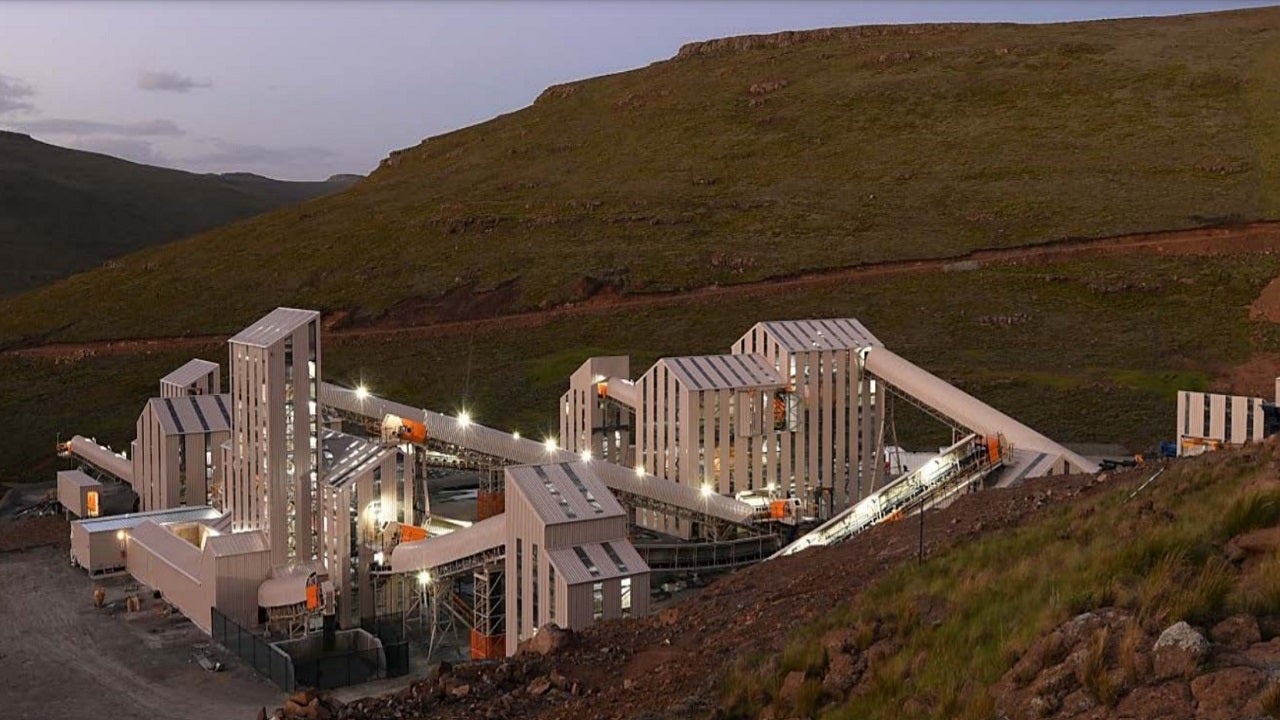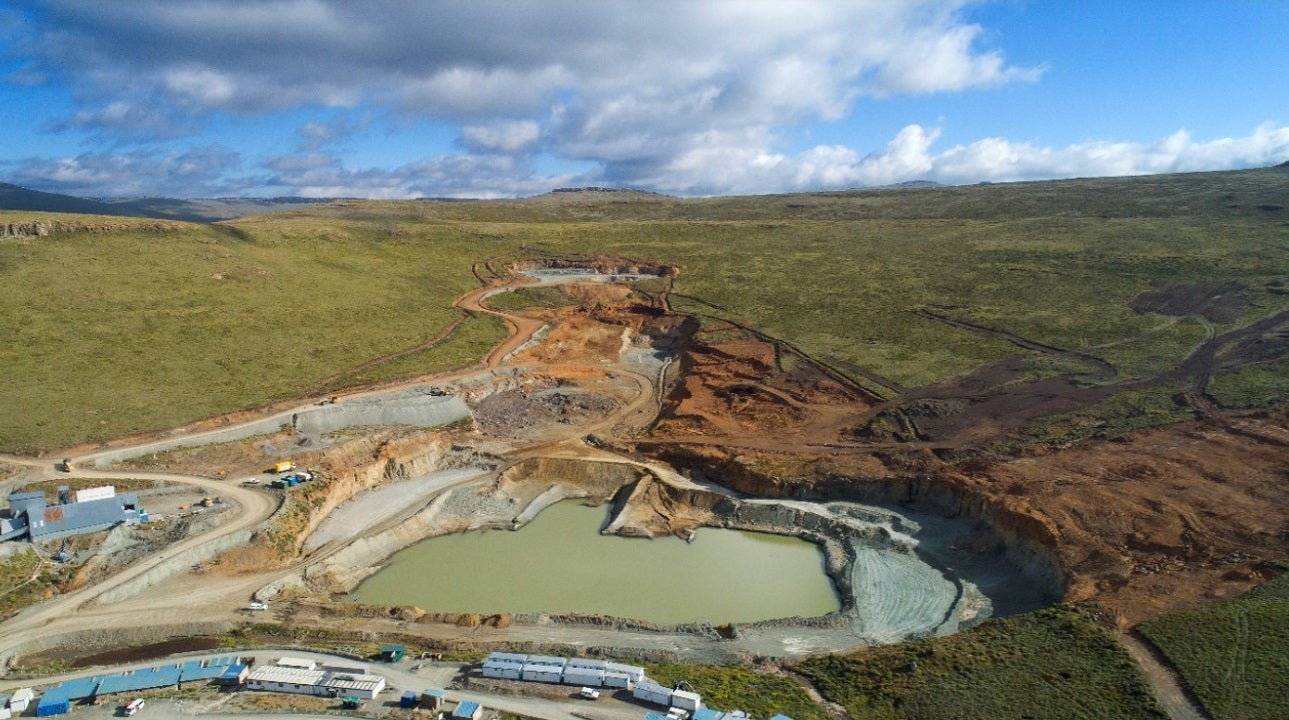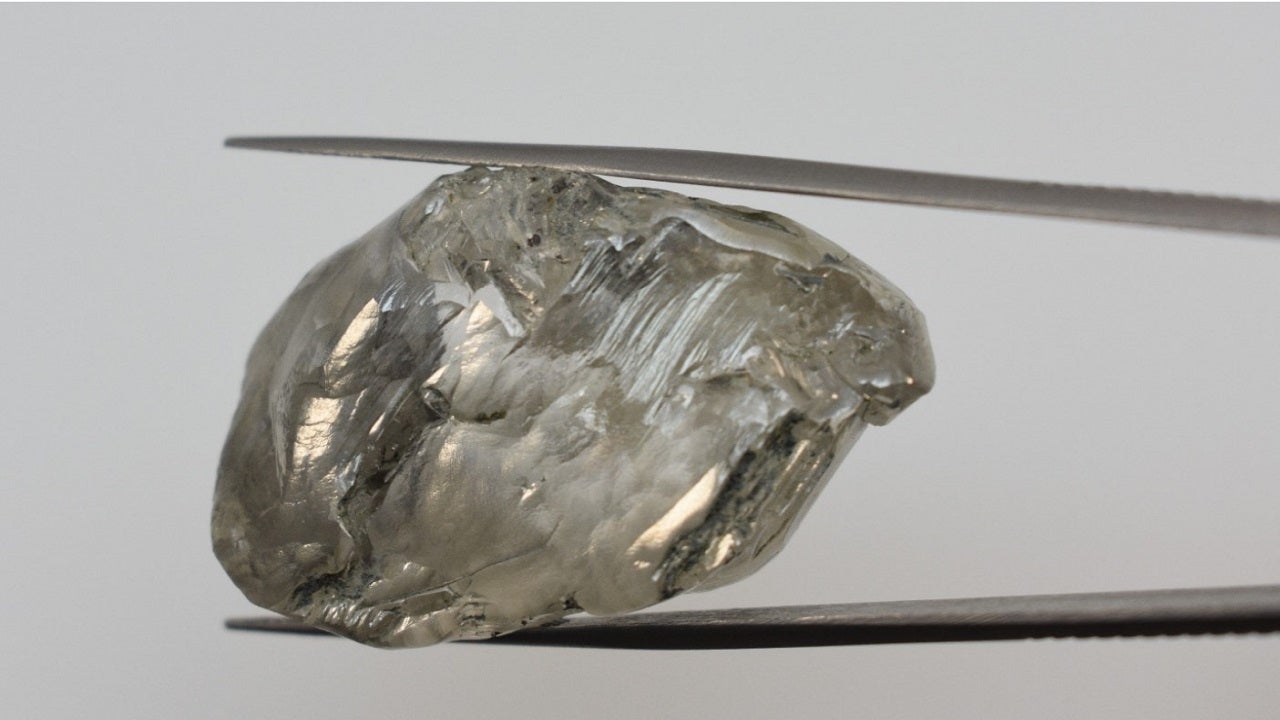The Mothae mine is a kimberlite diamond mine located in Lesotho, Africa. It is owned by Lucapa Diamond Company (70%) in partnership with the Government of the Kingdom of Lesotho (30%).
Discovered by Basutoland Diamonds in 1961, the mine is a source of large and premium-value diamonds such as the rare Type IIa whites and coloured gems. Some of the major recoveries made so far at the mine include a 126ct gem-quality diamond and six stones of more than 50ct each.
Mothae was acquired by Lucapa in January 2017 after Canadian diamond miner Lucara walked out of the project.
The mine began commercial production in January 2019 with 30,107ct of diamonds in its first year of production. It has a mine life of more than 20 years.
The mine was put on care and maintenance in late March 2020 due to the Covid-19 lock-down and resumed operations with 75% of nameplate capacity in October 2020.
Location of Mothae kimberlite
The Mothae kimberlite mine is situated at an altitude of 2,900m above sea level in the Maluti Mountains of Lesotho.
It is located 5km away from Letseng diamond mine and 135km from the capital city of Maseru.
The mine can be accessed from Butha-Buthe by a tar road which is approachable through a 5km-long gravel road.
Geology of Mothae kimberlite
The Mothae mine has an 8.8ha diamondiferous kimberlite pipe. The mine is located in the Kaapvaal Craton, which hosts several diamondiferous kimberlites and spans across various parts of South Africa, southern Zimbabwe, and southeastern Botswana, and Swaziland.
The Mothae kimberlite features different types of large volcaniclastic kimberlite and comprises a southern lobe that is connected to a northern lobe by an extended central body.
Mothae resources
In October 2020, Lucapa reported a 280% increase in indicated diamond resources at the mine to 9.2 million tonnes (Mt), containing approximately 280,000ct of diamonds graded at 3.10 carats per one hundred tonnes (cpht).
The inferred resources are estimated to be 39.4Mt graded at 2.44cpht, containing approximately 960,000ct of diamonds.
Mining at Mothae
Mining at Mothae involved sourcing of kimberlite material from lower-margin zones of the kimberlite pipe in early-2019. It was later transitioned to the higher-margin southern pit, which produced a 64ct Type IIa D-colour gem, the first commercially produced diamond from the mine.
Mining is undertaken in two phases, with the first phase, including weathered kimberlite material at the top of the pipe while the second phase will include the underlying harder and unweathered kimberlite.
The diamond mine is developed based on an updated open pit optimisation process formulated using Whittle pit optimisation. It employs conventional open-pit methods of drilling and blasting, followed by load and haul. The independent technical report released in 2017 considered free dig mining at a near-surface weathered zone, and ripping by bulldozer in transitional kimberlite to decrease the amount of drilling and blasting.
Processing details
A 1.1Mtpa diamond processing plant was commissioned in 2018, which is planned to be optimised to 1.5Mtpa through additional secondary-crushing capacity and a bypass conveyor.
The plant receives run-of-mine (ROM) material through a feed hopper equipped with a static grizzly to scalp at 450mm. The material is extracted from the bin using a vibrating grizzly feeder (VGF).
The VGF undersize and hybrid crusher product is discharged into the primary crusher product transfer conveyor, from where it is discharged onto the scrubber feed transfer conveyor. It is further transported to the scrubber feed conveyor, where the scrubber is fed after pulping with dense media separation (DMS) effluent.
An XRT module is installed for the recovery of large, low luminescence Type IIa diamonds. The concentrates from the XRT are fed to the sort house. The coarse tailings are transferred to the secondary crusher surge bin, and the fine tailings are sent to the tailings stockpile.
A variable-speed pan feeder is used to extract the material from the bin to attain choke feed conditions into the cone crusher, and the product is discharged to a secondary single deck where it is screened at 3mm.
The DMS surge bin feeds the DMS plant via a belt feeder equipped with a weightometer. The DMS tailings are sent to the tailings stockpile while the DMS effluent is recycled to the primary scrubber and screen.
The DMS concentrate is classified into fractions and batch fed to the recovery plant, followed by drying of the concentrate using a drier. It will then be fed to two X-ray machines.
The recovered diamonds are sold via tenders in Antwerp.
Contractors involved
MSA Group prepared the mineral resource statement and competent persons report for the project.
JDS Energy & Mining was appointed by Lucara Diamond to conduct a pre-feasibility study. South African firm Gemcore Group won the contract to conduct the initial phases of the plant design work while Dynamic Engineering performed plant fabrication and engineering works. Paradigm Project Management (PPM) designed and managed the phase three modification of the plant.
In 2010, Thoytanyana Mining and Civil works won a mining contract and Minerals Operations Executive was awarded a plant operation contract.
Mineral Services Canada conducted geological exploration and evaluation while Remote Exploration Services carried out on-site work.






